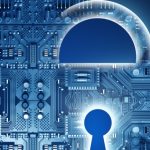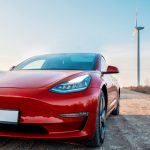NEURA Robotics is showcasing substantial advancements in robotics at Automatica 2025, held in Munich. With public demonstrations drawing attention, the German company has introduced its third-generation 4NE1 humanoid robot, released the MiPA cognitive household and service robot for market, and launched the Neuraverse open robotics ecosystem. The company’s presence signals a push toward accessible, flexible automation in both professional environments and daily life, further marking NEURA’s intent to unify hardware and software under one platform. These developments resonate with shifting industry interest in standardized, cross-application robotics, which could have ripple effects throughout manufacturing and the consumer sector.
Coverage from earlier years depicted NEURA Robotics as an emerging player focused on collaborative robots and cognitive AI-driven features, but its previous releases centered largely on industrial scenarios without wide consumer access. Past news highlighted partnerships with established industrial brands and ambitions around large-scale adoption; however, details about comprehensive ecosystem deployment or the inclusion of consumer-oriented products like MiPA were limited or speculative. The Neuraverse concept, evolutionary in scope, had previously been mentioned as a developmental idea, not yet at the point of commercial rollout or expansive application sharing. Compared to previous information, this announcement formalizes the company’s desire to reach mass markets, tying together hardware, platform, and developer-facing services under a clear business and technical strategy.
How Does the 4NE1 Humanoid Robot Advance Autonomy?
The 4NE1 humanoid robot reveals a key focus on autonomy and safety in collaborative environments. Equipped with NEURA Robotics’ Omnisensor and seven cameras, 4NE1 recognizes and distinguishes humans from objects, adapting its actions to varying situations. The platform includes features like artificial skin, dual-battery operation, and advanced joint control, allowing for robust performance in both industrial and domestic roles. Interaction is enhanced by conversational AI integrated with speaker and microphone systems, providing avenues for natural voice-based programming. The company claims that its NEURA Hive manufacturing technique enables scalable and efficient robot production linear to market demand.
What Distinguishes the MiPA Service Robot’s Capabilities?
MiPA is positioned as a two-armed mobile manipulator designed to address labor shortages while being affordable for households. Built on the same AI architecture as industrial platforms, it can learn tasks, such as vacuuming or monitoring health conditions, via the Neuraverse environment. The robot incorporates environmental sensors and supports IoT interoperability, connecting to smart devices or wearables to expand use cases from home care to routine chores. Customer availability for MiPA is planned within the year, matching NEURA’s stated aim of integrating advanced robotics into daily living.
How Does the Neuraverse Ecosystem Shape the Robotics Landscape?
Neuraverse functions as an open platform, similar to an app store, where applications and robot experiences are shared among connected devices. Developed with the NEURON OS operating system, Neuraverse allows collaborative development while preserving intellectual property. Initial test cases, such as a welding solution, have illustrated real-time human-robot cooperation. NEURA Robotics further augments its training and application logic via “NEURA Gyms,” generating both real and synthetic data to improve system intelligence. Collaborations with partners like NVIDIA serve to enhance both simulation and on-device cognition, utilizing technologies such as Jetson and the GR00T N1 model.
Partnerships remain a recurring theme for NEURA Robotics. Collaborations with NODE Robotics enable the integration of NODE.move navigation into the MAV platform, providing real-time path planning for autonomous mobile operations. With payload capacities up to 1,500 kg and advanced navigation features, MAV robots equipped with NODE’s software support a range of logistics and handling applications. Plug-and-play capability and compliance with industry standards ensure that operators can flexibly deploy and modify systems as needed. NODE’s inclusion in the NEURA app network exemplifies the company’s modular, open approach.
“Rooted in Baden-Württemberg, NEURA Robotics is pursuing a bold vision — not only to advance its own portfolio, but also to help shape the future of robotics as a whole from within Germany,” said Dr. Stefan Doerr-Laukien, co-founder and CEO of NODE Robotics.
The strategy described by NEURA Robotics consolidates several industry trends: open developer ecosystems, interoperable components, and AI-powered autonomy. By offering hardware like the 4NE1 and MiPA robots alongside the app-enabled Neuraverse, NEURA aims to support both industrial and service automation while reducing integration complexity. Strategic partnerships with companies such as Kawasaki Robotics, Delta Electronics, Omron Robotics, SAP, and NVIDIA reflect a commitment to cross-industry interoperability, with a focus on facilitating data management, connectivity, and collaborative development. For readers evaluating robotics adoption or development, NEURA’s approach suggests a move toward modular, upgradable systems that may reduce the need for entirely proprietary solutions. The intersection of AI training, developer-driven applications, and hardware flexibility implies increasing opportunities in both consumer-facing and enterprise applications. As the robotics sector moves from bespoke, isolated deployments to interconnected platforms, companies capable of unifying these aspects could see accelerated adoption and broader impact.










